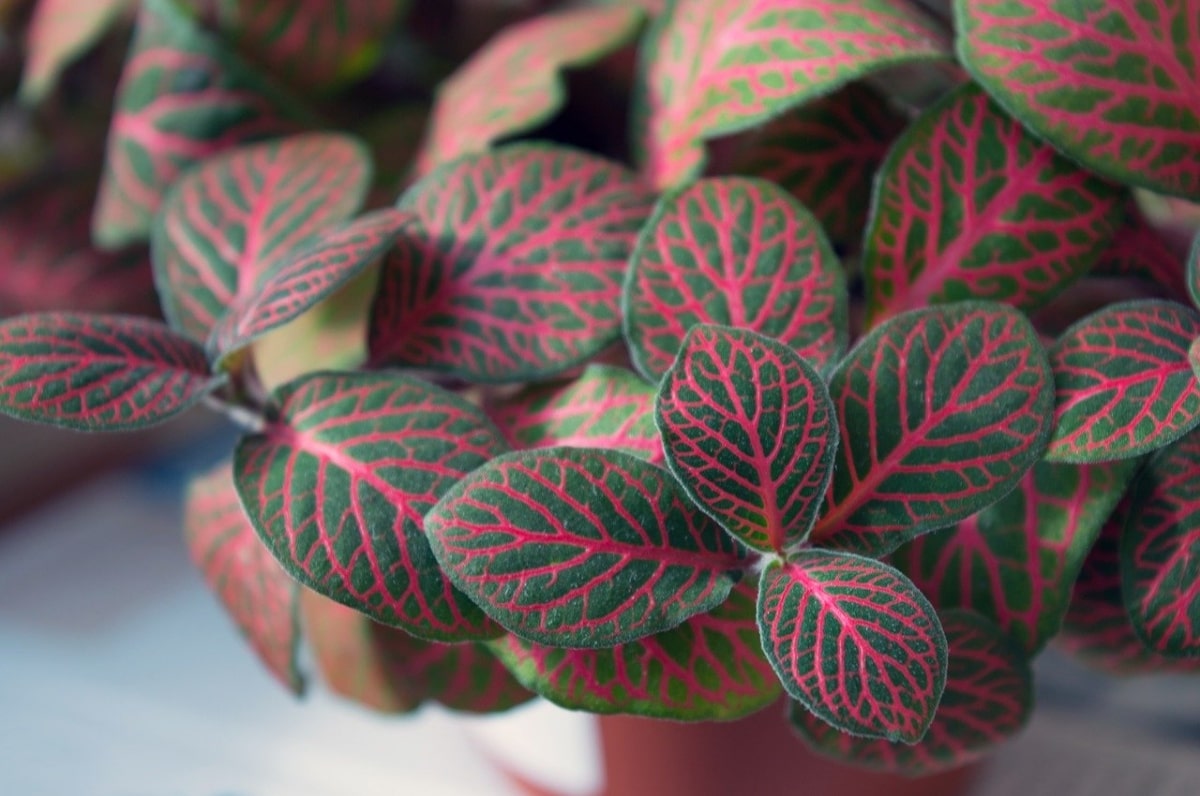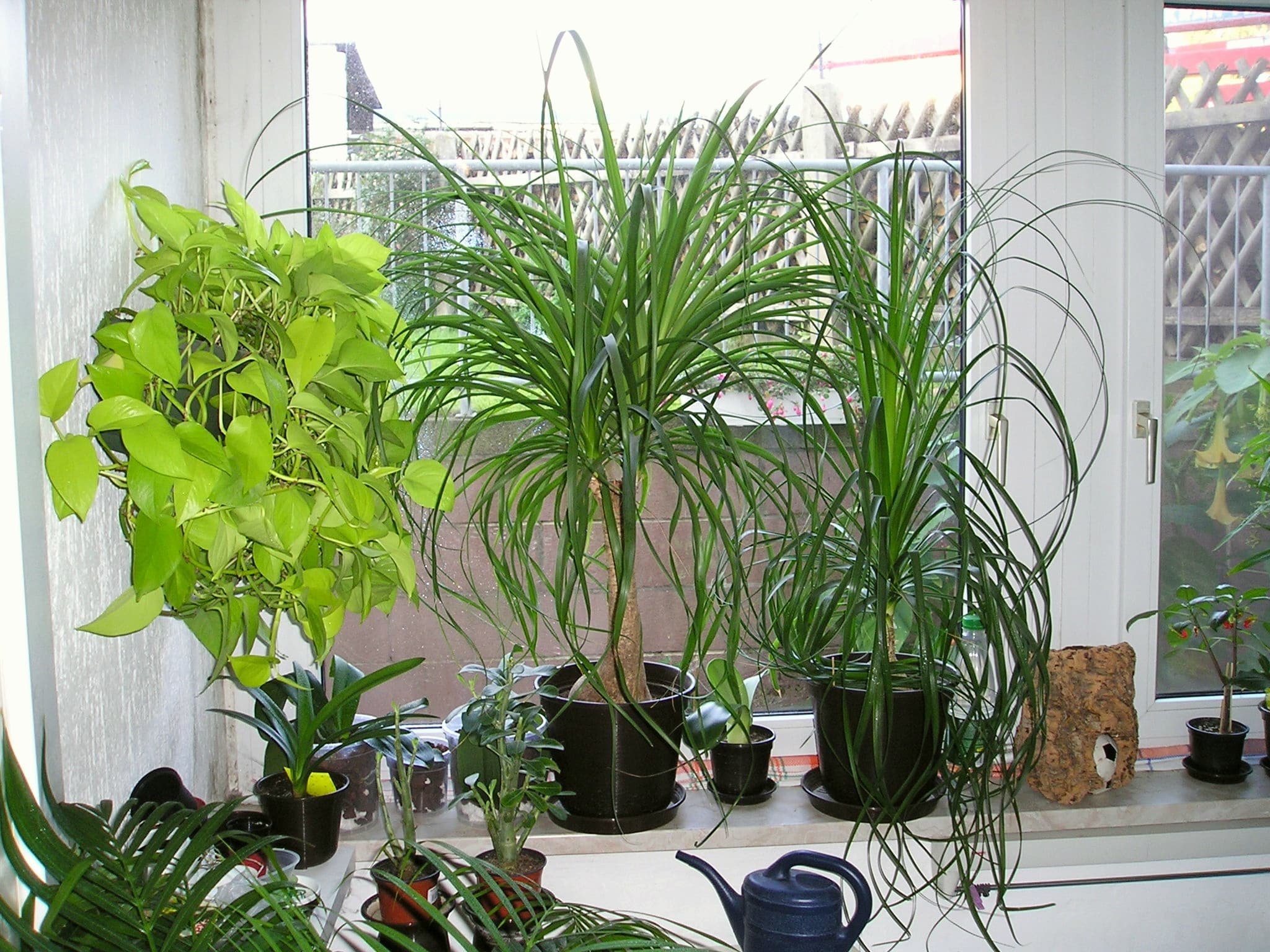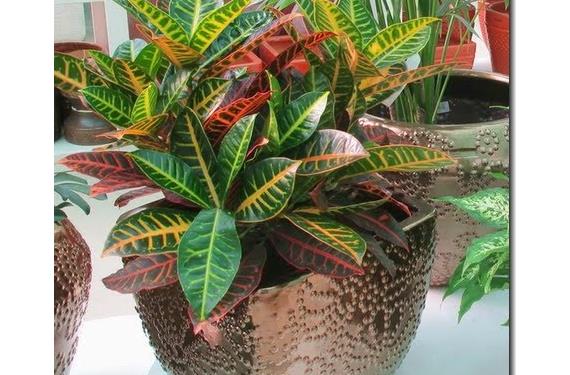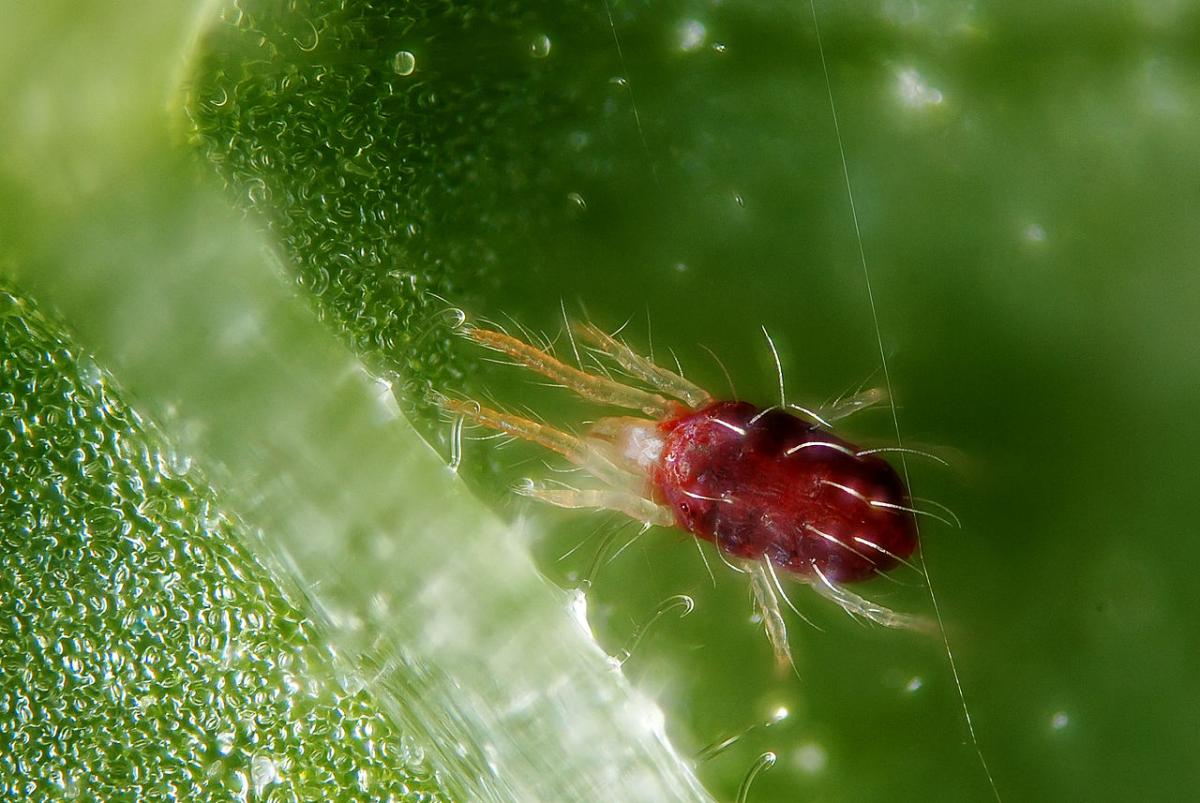
Have you ever noticed that your indoor plants have barely grown in recent times? If so, you should know that there are several reasons why they have stopped their growth, although the solution is not always simple. In addition, it is important to be patient, since they live on a different time scale than ours.
If you want to know why indoor plants do not grow, and what you have to do to make them resume their growth, then we will tell you everything about this topic, one of the most common problems when growing indoors.
They have run out of space

Image - Flickr / Maja Dumat
Lack of space is one of the most common causes. When we buy a plant we have to know that almost always it has already rooted well in that pot, and that therefore it will need a larger one to continue growing.
In addition, transplantation is something that we will have to do several times throughout your life, whenever its roots come out through the holes and / or when it is seen that it is very "tight", otherwise it will not grow.

Once transplanted, it will not take long to see how they grow again. It will be then when we can continue paying them.
Tracked location changes
Plants are not made to move from one place to another. Just get home We have to find the ideal location for them, keeping in mind their light needs and the size they will have when they mature, and leave them there.
We will only have to move them in specific cases, for example, to change pots, or if we have to make reforms in the room in which we have put them. Likewise, it is important to rotate the container daily so that the same amount of light reaches them throughout; in this way, they will have a normal development, and their stems will not bend.
Lack of irrigation
How often to water indoor plants? It depends. In summer we will water more frequently than in winter, but it is important to water well, 1 and 4 times a week. Sometimes, for fear of adding more water than necessary, they are watered only with a glass, and that is not always correct.
What to do is pour water until it comes out of the holes in the pot, since only in this way will it reach all its roots. If we are worried about furniture, we can put a plate under the pot, but after watering we have to drain it.
As for the symptoms of lack of irrigation, it should be known that they are the following:
- new yellow leaves
- dry ends
- fallen leaves, like 'sad'
- dry land
To correct it, it will be enough to water in abundance, until the earth is well soaked. Thereafter, it will be watered more often.
Excess irrigation
Overwatering is a more serious problem than underwatering, since when the humidity is high it is easy for fungi to proliferate, which are microorganisms that love places like this. In addition, the weakness of the plants stimulates them to infect them and cause them more damage. For this reason, it is important to act soon and as quickly as possible, following these steps:
- The first thing is to detect excess watering: yellowing of the leaves (starting with the lower ones), very humid soil that may even have verdina, the appearance of white mold on the substrate and / or on the plants, black roots.
- Now, the plant has to be treated with powdered copper, to eliminate or at least stop the fungi. It will be sprayed with water so that it "sticks" to the ground.
- Then, we will proceed to remove the plant from the pot, and wrap the soil or root ball bread with absorbent paper. It is possible that it gets soaked quickly, so if that is the case, it will have to be removed and put on a new one.
- Afterwards, it is left in a room, without a pot, for about twelve hours.
- Finally, it is planted in a new pot with new substrate, but it is not watered. You have to wait a couple more days for the soil to dry out a bit.
Insufficient light

All plants need light to grow. For this reason, when they stop doing it, it may be because they have been placed in a room where there is little light. So that, If you see that it does not grow and that its leaves are also beginning to lose color, do not hesitate to move them.
But you should not put them right in front of the windows, as they will burn. Yes you could near these, but not next to them.
Hot or cold
Plants that are sold as if they were indoors (actually, all plants are outdoors, but there are some that must be kept indoors so they can survive the winter) are usually native to tropical and subtropical regions of the world. In these places the temperatures remain more or less stable, around 18 and 28ºC on average. At home during the summer it can be 30ºC or more, and in winter 10ºC or less.
For this reason, it is in these two seasons when we will see that its growth rate slows down, to the point of stopping. To protect them, we advise you to do the following:
- Summer: If you live in a very hot area, take your most delicate plants to the coolest room there is (and that has natural light). If there are not, then you can take them to where you have the air conditioning, but put them as far as possible from the device, since the air currents do not have to reach them.
- WinterIf the winter is cool or cold, and / or if your house is cold like mine, you can improvise a homemade greenhouse by covering an old shelf with plastic, or even if the plants are very small, with plastic bottles. Of course, you have to make some holes in said plastic, otherwise the air will not be renewed, which would be a breeding ground for fungi. To keep the internal temperature high, take them to the room where you have the heating on.
The earth does not allow them to grow
Sometimes a substrate is bought because it seems cheap and of quality to us, but the truth is that there are many brands, and not all are the most suitable for plants. For example, if a cactus or an epiphytic orchid (such as Phalaenopsis) are given universal cultivation substrate, it is most likely that their roots will rot since it is a soil that retains a lot of moisture, which is just what they do not need. these plants.
If black peat is put on a acid plantLet's take an azalea or a camellia for example, it won't grow either because that land doesn't have iron. What we would see is that its leaves become chlorotic.
Therefore, it is very, very important to spend a little time figuring out the best substrate for each type of plant. In this article we talk about it:

They need to be paid
Today you can buy different types of fertilizers and fertilizers for indoor plants. But since they are potted, it is advisable to acquire those that are liquid; in this way, they will absorb them more quickly without modifying the permeability of the earth. This means that it will be able to continue absorbing and filtering the water normally.
Now, How can we know that they need nutrients? The most obvious symptoms are:
- lack of growth
- leaves lose color
- curly leaves
- plants get stunted
- the flowers abort
- the fruits do not ripen
To correct it, Indoor plants must be fertilized during spring and summer, for example with guano, or with fertilizers for green plants (for sale here) or the universal (for sale here), following the instructions for use.
Has pests or any disease

Image - Wikimedia / Gilles San Martin
Although they are plants that are indoors, this does not mean that they cannot have pests or diseases. It is important to know at least the most common to be able to identify them. For example: uterine
- mealybugs and scales
- Red spider
- aphids
- White fly
- mildew
- powdery mildew
- roya
The first four are pests that you can treat with organic insecticides like diatomaceous earth (buy it No products found.) or the neem oil. The last three are diseases caused by different fungi, and which are treated with specific fungicides.
All in all, we hope these tips have helped you grow your indoor plants again.